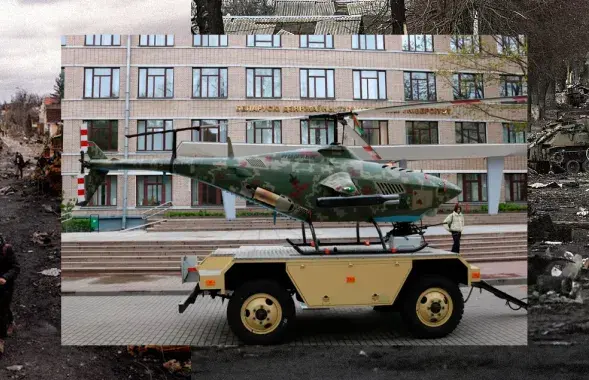Residents clash with mobile network provider over antenna
Residents of the town of Maladzecna have been in a month-long row with the MTS, a mobile network provider, our local correspondent Zmicier Panjamonau reports.
The MTS mounted an antenna on the roof of a children-clothes store, adjacent to the residential house No 111 on the Vialiki Hasciniec Street. The mast is situated within 30 meters away from the residential windows.
The bottom-line of the conflict is that on December 19 and 26 the residents sent two complaints to the city hall, demanding to remove the mast. But, the authorities took a neutral stance, suggesting that the sides resolve the problem on their own.
“We are not interested in having any mention of the conflict between our company and the residents of Maladzecna in the media”, Dzmitry Stanjuta, MTS’s public relations manager said.
“We will stand firm and are ready for any steps to make sure that we do not see this antenna from our windows,” said one of the public activists.
MTS specialists brought the local sanitary inspectors to have several meetings with the residents of the house, but they failed to prove that the antenna was safe for the neighborhood.
Indeed, over the past several years, mobile phones have stopped being simply an expensive toy and a show-off item. They have become part of our every-day life.
But, telephones do not operate independently. They require a network of masts, which ensure the operation of the handsets. The question is: how those masts affect human health.
Due to the lack of reliable information, people start protesting, when they have the communication companies mount their antennas near their houses. The row in Maladzecna is not the first example of the public discontent with the mobile communication hardware.
[In 2003, residents of the town of Baranavicy forced the local authorities to ban the installment of an antenna mast on a water-pumping tower in the center of a residential district. It took six months to settle the row. The mast was shifted to a technical building, 800 meters away from the houses.]
The European Radio for Belarus has asked Aliaksandr Stazharau, the dean of radioactive medicine and ecology department at the Minsk Medical University, to elucidate on the technical aspect of the mobile communication technology.
“The energy that is transmitted from a base relay station is for 90 percent contained in the main beam. The beam is transmitted at a certain angle and lies on the ground at a distance of approximately 100-150 meters.
Therefore, if it is not a 9-storey or 12-storey building and depending on the height of the mast location, the beam is not supposed to be projected on the building. It will make no sense in terms of the wave propagation laws.
Engineers, who install this equipment, will definitely direct it higher. Otherwise, this building will simply stop the beam, and it will not continue further. What about the coverage area?
It will not be ensured. The beam propagates at the angle of 120 degrees where antennas are located, thus ensuring the direct propagation,” he said.
According to a recent research by the Italian doctors, radiation from the cellular masts affects the motion area of human brain. But, it is not clear whether it is harmful or not.
Last year, a group of Swedish scientists released a statement, saying that staying permanently near the relay stations could theoretically cause the brain cancer. Professor Aliaksandr Stazharau continues:
“There is a dead zone right under the antenna. There is no radiation there. But, the energy of the beam changes inversely as the square of the distance. It means the greater the distance is, there is less radiation.”
The mast in Maladzecna has been already mounted but not connected yet. On January 13, the chairman of the Maladzechna district executive committee told the members of the public that their views would be taken into account. He said if they were not to change their mind, MTS would have to dismantle the mast.
Meanwhile, the mobile network operator has been given time to try to convince the residents of the house No 111. Currently, there is a ‘cease-fire’, but the people are waiting for the authorities to take their side and remove the antenna.
The MTS is holding a pause, hoping the residents of the troubled house will get tired of struggling and will eventually disregard their worries. The authorities are waiting for the sides to resolve the conflict themselves.

















